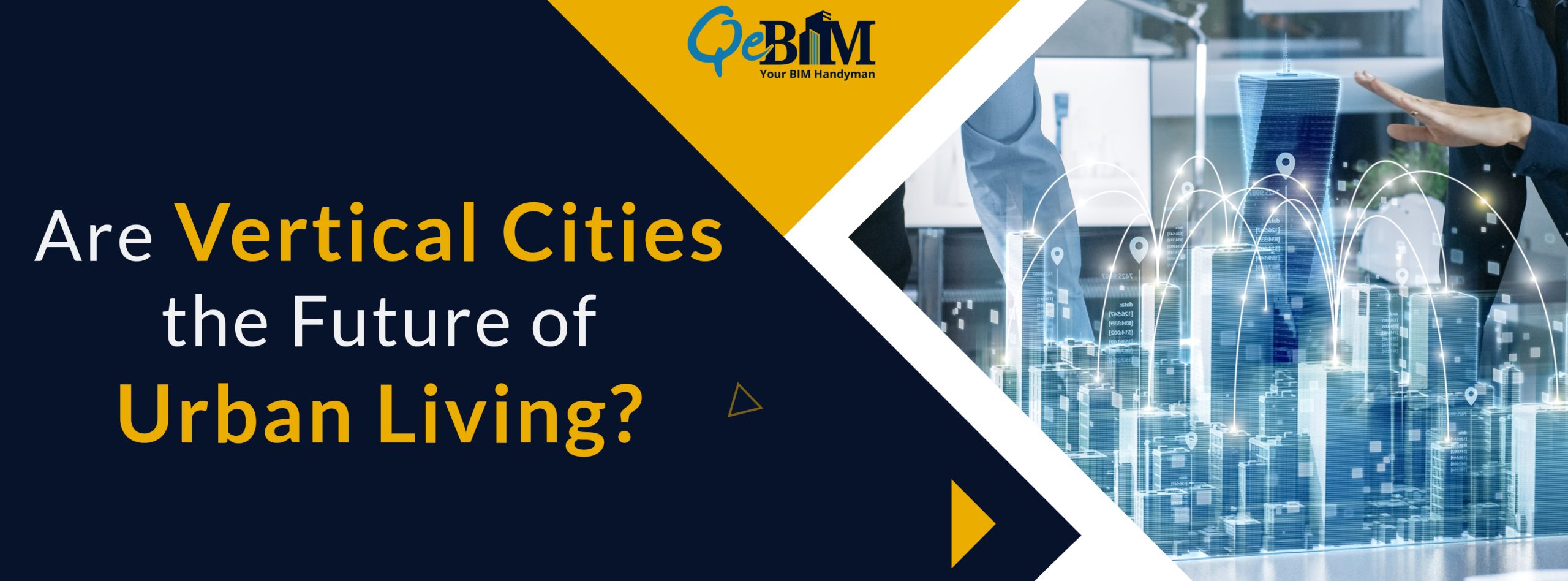Are Vertical Cities the Future of Urban Living?

A vertical city is a very high-rise building or a skyscraper accommodating different facilities in addition to housing like commercial centers, healthcare, education, and so on. It provides a roof to the large number of people solving the current scenario of urbanization and increasing population.
It is fairly visible that the global population is sky-rocketing at a multiplied speed. As per the research, there will be more than 8.5 billion people compared to the current scenario. To accommodate such a massive chunk of the population, there needs to be infrastructural development, and that too at a significantly faster pace. This will raise the need to destroy the forest and swamp it with building construction which cannot be the ideal solution as it may lead to natural resource destruction again, causing a massive problem for humanity. Therefore, the concept of a Vertical City came into existence. Instead of destroying nature, vertical towers can be placed in the city to preserve the environment and solve the problem of overpopulation.
Vertical construction enhances the accommodating structure, making more space for living and other facilities in a single elongated structure, fulfilling their healthcare, education, commercial, and different needs. In short, the vertical city concept is an entire human lifestyle contained in a massive skyscraper. Vertical cities also reduce the problem of transportation and many others caused due to overpopulation. They aim to maximize the efficiency of the availability of limited space by creating tall multi-purpose habitats. Vertical cities offer people with increased quality of life in a sustainable environment.
Characteristics of a Vertical City
A vertical city, often called a vertical multi-storeyed building, comprises of below features:
1) Optimized Space
A fundamental and exciting characteristic of a vertical city is that it consumes less land but provides a larger accommodation space. They use less area and are structurally optimized.
2) Facilitates Amenities
Another critical aspect of the vertical city is that they facilitate multiple amenities and services under a single roof covering almost all aspects of the human habitat in a single-built structure.
3) Increased Sustainability
It comprises energy-efficient devices and equipment making it a more sustainable structure. It also preserves the destruction of the environment, making it greener and creating a sustainable environment.
4) Enhanced Architecture
It is built considering the architecture to the next level with an enhanced and efficient structure to serve many people in less space and with an improved lifestyle. It is the category of modern architecture that represents the distinct skyline of the city.
Vertical City: A Step Towards Urban and Greener Life
Viewing the characteristics of the vertical city, it is definitely going to be the future and practical solution with the increasing population and urbanization. The future of urban centers will solely depend on taller and multi-storeyed buildings rather than regular cities because of the opportunities and potential it withstands. The essential difference between vertical and standard cities is that they differ structurally, and a well-planned vertical structure can increase compactness and offers exceptional efficiency. To create an efficient vertical city of this high magnitude, intense planning and enhanced designing skills are required in addition to the safety aspect. While vertical cities are the future of urban living, ensuring they are built correctly is essential. Outsourcing a BIM Service Provider with extraordinary structural skill and understanding can give you an intact structural model so that your vertical structure can withstand the maximum number of people. Also, for vertical structures to succeed, they need to be strong enough to face natural calamities, wind forces, and other potential issues; accurate Structural BIM Services will help you create a precise, efficient, and sustainable structure. One of the most significant examples of a structurally strong vertical city is the world-famous Burj Khalifa of Dubai, which is a mix of a skyscraper with commercial and residential facilities.